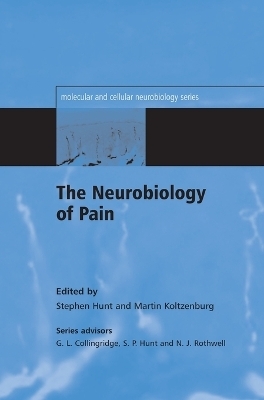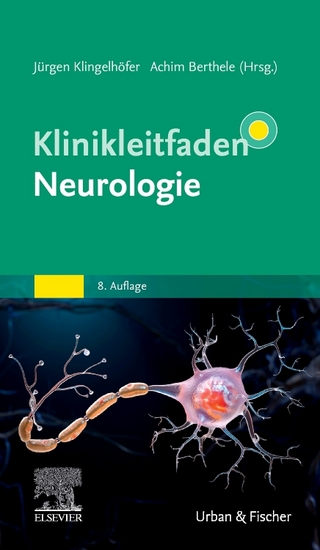
The Neurobiology of Pain
(Molecular and Cellular Neurobiology)
Seiten
2005
Oxford University Press (Verlag)
978-0-19-851561-6 (ISBN)
Oxford University Press (Verlag)
978-0-19-851561-6 (ISBN)
Within the last decade we have seen major new advances in the neurobiology of pain. The topic has emerged as a separate field of study in its own right. A new volume in the Molecular and Cellular Neurobiology series, this volume presents a state-of-the-art account ot the neurobiological basis of pain, edited and written by leading scientists in this field.
The last decade has seen major advances in the neurobiology of pain, primarily resulting from a deeper understanding of the way in which pain signals are coded and processed in the nervous system. This volume in the Molecular and Cellular Neurobiology series is the first book for many years to present an integrated overview of the current state of research into the neurobiology of chronic and acute pain.
While recent molecular aspects of nociception are covered in some detail, the book also emphasises the importance of viewing the pain experience as the co-ordinated response of many different areas of the nervous system. The molecular advances are set in the context of the neurobiological system of pain processing. The appropriate behavioural response to injury can therefore be thought of as the result of the integration of information processed within areas of the brain concerned with cognition, affect, sensory discrimination and movement.
Chapters cover recent advances in nociceptor transduction mechanisms, nociceptor plasticity and the biochemical anatomy of pain pathways. Other contributions are concerned with the development of pain systems and with the central processing of nociceptive information studied with brain imaging techniques. Several chapters additionally cover the mechanisms of clinically important pain states such as neuropathic pain, cancer related pain and migraine.
This volume presents a state-of-the-art account of the neurobiological basis of pain, edited and written by the leading scientists in this field.
The last decade has seen major advances in the neurobiology of pain, primarily resulting from a deeper understanding of the way in which pain signals are coded and processed in the nervous system. This volume in the Molecular and Cellular Neurobiology series is the first book for many years to present an integrated overview of the current state of research into the neurobiology of chronic and acute pain.
While recent molecular aspects of nociception are covered in some detail, the book also emphasises the importance of viewing the pain experience as the co-ordinated response of many different areas of the nervous system. The molecular advances are set in the context of the neurobiological system of pain processing. The appropriate behavioural response to injury can therefore be thought of as the result of the integration of information processed within areas of the brain concerned with cognition, affect, sensory discrimination and movement.
Chapters cover recent advances in nociceptor transduction mechanisms, nociceptor plasticity and the biochemical anatomy of pain pathways. Other contributions are concerned with the development of pain systems and with the central processing of nociceptive information studied with brain imaging techniques. Several chapters additionally cover the mechanisms of clinically important pain states such as neuropathic pain, cancer related pain and migraine.
This volume presents a state-of-the-art account of the neurobiological basis of pain, edited and written by the leading scientists in this field.
1. Molecular biology of nociceptors ; 2. Nociceptor plasticity ; 3. Molecular architecture of the dorsal horn ; 4. Cellular and molecular mechanisms of central sensitization ; 5. Mechanisms of peripheral neuropathic pain ; 6. Targets in pain and analgesia ; 7. The ascending pain pathways ; 8. Spinal delivery of drugs in pain control ; 9. The development of pain systems ; 10. Visceral and deep somatic pain ; 11. The organization of the midbrain periaqueductal grey matter and the integration of pain behaviours ; 12. Descending control of pain processing ; 13. Central imaging of pain ; 14. Headache ; 15. An integrative approach to the control of cancer pain
| Erscheint lt. Verlag | 22.9.2005 |
|---|---|
| Reihe/Serie | Molecular and Cellular Neurobiology Series |
| Zusatzinfo | 4pp colour plates,numerous halftones, tables and line drawings |
| Verlagsort | Oxford |
| Sprache | englisch |
| Maße | 174 x 247 mm |
| Gewicht | 851 g |
| Themenwelt | Medizin / Pharmazie ► Medizinische Fachgebiete ► Neurologie |
| Medizin / Pharmazie ► Medizinische Fachgebiete ► Schmerztherapie | |
| Naturwissenschaften ► Biologie ► Genetik / Molekularbiologie | |
| Naturwissenschaften ► Biologie ► Humanbiologie | |
| Naturwissenschaften ► Biologie ► Zellbiologie | |
| Naturwissenschaften ► Biologie ► Zoologie | |
| ISBN-10 | 0-19-851561-8 / 0198515618 |
| ISBN-13 | 978-0-19-851561-6 / 9780198515616 |
| Zustand | Neuware |
| Haben Sie eine Frage zum Produkt? |
Mehr entdecken
aus dem Bereich
aus dem Bereich
interdisziplinäre Diagnose- und Behandlungsstrategien
Buch | Hardcover (2024)
Urban & Fischer in Elsevier (Verlag)
97,00 €
Buch | Hardcover (2024)
Springer (Verlag)
139,99 €


